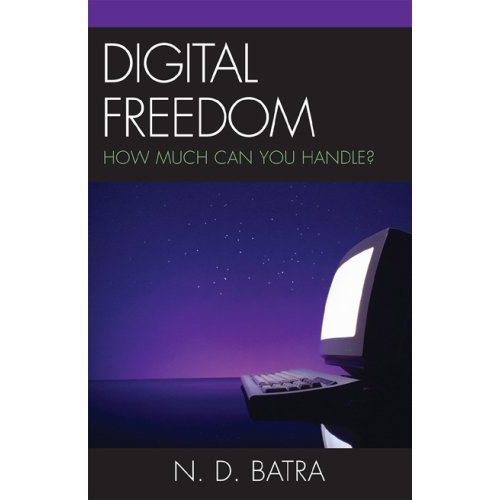Digital freedom structured
From The Statesman
ND Batra
While most digital media companies think inside the box and try to protect their works with copyrights, patents, trademarks and contractual laws, apart from using technological means such as trusted systems and digital rights management, Open Source movement has been offering an alternative way of doing work in cyberspace.
Open Source guys believe that if the underlying source code of computer software were made freely accessible, it would be easy to improve upon its vulnerabilities for the benefit of all. The marketplace works on the assumption that its open competitive system, too, would bring about similar efficiencies, which explains to some extent why Open Source free software has not been able to do any damage to proprietary systems provided by Microsoft, Apple and others.Vista, iPod are forever. So is the Open Source, coexisting in a competitive environment of the marketplace.
The marketplace needs competitive diversity. In any case, when people talk of free software, what they mean is freedom to creatively mess up with the underlying code and change it according to their needs.If you get Microsoft’s Vista, all you can do is to use the system as it comes, even if the company gives you a free copy. Not only is the underlying code inaccessible, the licence would also prevent you from any attempt to hack it open to correct its flaws, if any.Fixing bugs is Microsoft’s responsibility, and the company must do if it wants its product to survive.
An Open Source operating system such as Linux, however, gives you the freedom to build upon its underlying code and develop newer software programmes, though you might have to pay for a CD of Linux. In this sense, Linux is free and open, though you pay for it. Microsoft Vista is proprietary, though the company might give it free to schools, for whatever reasons.Sometime ago, Richard Stallman of the Free Software Foundation was quoted in the Associated Press as saying, “Proprietary software companies hand out free copies for the same reason that cigarette companies give sample packs to college kids ~ to encourage addiction.” That’s a terrible analogy to explain the behaviour of proprietary systems, but you get the drift.
Paul Wallich of the free software movement argued sometime ago in Scientific American that Internet culture thrives on freedom: “In some ways, it only makes sense that the Internet should run on free software: almost all its basic protocols were developed with US government funding by universities or contractors.“The Web is the brainchild of CERN, the European laboratory for particle physics near Geneva. But even after most of the Net’s infrastructure has been privatised development...of free open software continues.... The logic of the intellectual marketplace ensures that only the best code and overall structure ~ as judged by a programmer’s peers ~ will survive.”
The freedom he talked about is different from the freedom of the marketplace, which puts value on everything that passes through its portals.In its benign form, the marketplace is a platform for negotiations. But openness is no guarantee of survival of a product as the fate of the Netscape Web browser has shown. It must be understood that Open Source free software does not mean that it is in the public domain.You don’t need a licence to use a public domain software programme and you can do whatever you want with it. Nor can you take any legal action against the programme’s creator if there are problems.
On the other hand, Open Source software programmes are copyrighted and can be used only under a licence, just like proprietary software; but they come without any warrantee, to protect their creators from any liability.The difference between proprietary software and Open Source software is the degree of freedom that the latter gives under its licence.The greater the freedom, the greater is the responsibility of the user for fixing the problems that arise while using an Open Source programme. But by defining Open Source software and the conditions for licensing it in exclusive terms, some of its proponents seem uncompromising in their attitude. Some fear that the whole idea of openness might be stymied if proprietary companies were to release software that has some free features but is not really free enough to be deemed free under the strict definition of Open Source. And that could happen if proprietary software companies feel that they have to survive the challenge of Open Source.
But so far, the Open Source movement has not driven Microsoft or any other big company out of business. The challenge to Open Source is that it must be good enough to survive in the marketplace as an alternative to proprietary systems, keeping in mind that some proprietary programmes may assimilate its laudable features. That’s how the marketplace dialectics work. One of the claims made for Open Source software is that since the source code is open to modification, freelance programmers can fix bugs and eliminate any problem, which however has not always been the case.Besides, digital security is an industrywide global issue; it is not dependent upon the nature of the licence, open or proprietary.
Hackers love Open Source as much as they love Cisco, Sun Microsystems or Microsoft.
Wednesday, February 07, 2007
Digital Freedom
at Wednesday, February 07, 2007 Posted by Narain D. Batra
Topics
Technology
![]()
Subscribe to:
Post Comments (Atom)

No comments:
Post a Comment